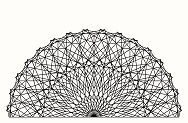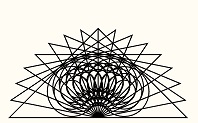


 |
 |
 |
Modern respiration evolved from the polar flagella of Pseudomonas fluorescens. Earlier concepts of evolution would have required independent evolution of the diverse functions flowing through Mendelian lines of decent. But over the past few decades, horizontal gene transfer has been recognize as exchanging genes between diverse species. The timing also shows the lineage. Pseudomonas flagella would have appeared around 700 million years ago (mya) followed by modern respiration around 600 mya. There are two types of ATP synthesis: Metabolic ATP synthesis is incorporated into catabolic breakdown of energy sources. In modern biology, glycolysis yields ATP directly from the catabolic reactions. By contrast, modern respiration uses the respiratory chain system to produce ATP in a highly specialized, rapid and efficient manner. Respiratory ATP synthesis was needed to produce enough energy in a rapid enough manner to allow animals to acquire locomotion. Catabolic ATP synthesis would have been too slow and limited for significant locomotion. Since animal locomotion became significant around 600 million years ago, modern, respiratory ATP synthesis would have begun at that time. Ediacaran animals appeared around 600 mya. But it is not clear that they had locomotion. It would have been modern respiration transferred with mitochondria that allowed significant motion to occur, while physiological complexity occurred with the Cambrian explosion due to an increase in critical minerals. Whatever the time frame, modern respiration would have been required for animal locomotion, because catabolic ATP synthesis would have been too limited for the energy demands of animal locomotion. The logic of evolution of mitochondria needs corrections. The assumption that mitochondria go back 1.7 to 2 billion years does not hold up to several important factors. More logical is that mitochondria evolved around 600 million years ago coinciding with the origins of animal locomotion. The key to understanding modern respiration and mitochondria is in the rotating proteins that create the efficiency for ATP synthesis. The differentiating function of the rotating proteins is to move reactants into place and the finished product out of the way. Otherwise, simple diffusion would be required, which would be much slower. The task is similar to that of an assembly line where bottles are capped. The bottles rapidly rotate under the press that ads the caps. Rapid rotation is needed to allow a lot of caps to be added rapidly. The rapidness of ATP production is similarly increased by rotating proteins. Evolving the rotating proteins and related assemblages requires a very unusual environment. The evolution would not have occurred in normal cytoplasm due to the disruptive influences. Metabolism is highly order in spatial arrangements which allows metabolites to migrate with the shortest possible distances from one reaction site to another. The smallest disturbances in physical arrangement would be highly disruptive and not selected in evolution. If distance increases between reaction sites, the reactants won't be in the right position or location and they will be disruptive of other processes. Physiology and micro morphology are highly resistant to change through evolution, while macro morphology is very easily changed through evolution, as shown with the morel mushroom. The reason is because physiology and micro morphology are linked to spatial arrangements within cells which will not tolerate rearrangements without degradation of physiology. Macro morphology is controlled by the number of cells in each direction, which can easily be changed without disruption of physiology. So the rotating proteins had to evolve out of the way where physiology is not significantly disrupted. The cell wall where flagella evolved served that purpose. It means the rotating proteins evolved first as flagella appendages and then were adapted for ATP synthesis. Once the rotating proteins were converted to ATP synthesis, the whole bacterial cell could enter eukaryotic cells to form mitochondria. This means the polar flagella of Pseudomonas fluorescens evolved before mitochondria. The increase in oxygen about 635 million years ago may have encouraged modern respiration to evolve in P. fluorescens at that time.
Also needed in modern respiration is the porphyrin ring which exists in cytochromes. It would have evolved in cyanobacteria and then migrated to P. fluorescens to create modern respiration. Therefore, the bacteria that entered eukaryotic cells to create mitochondria would have been an offshoot of P. fluorescens.
This explanation is dependent upon the rotating proteins having the function of moving reactants into place during ATP synthesis. There has been a shift in analysis for respiration in recent years toward the assumption that the rotating proteins are an energy source. That assumption is energetically ridiculous. Kinetic energy can never be converted into chemical energy, as kinetic energy is in the nuclei of atoms, while chemical energy is in the electrons which spin around nuclei. Only radiation can increase the energy of the electrons which are spinning around nuclei. Vibrio bacteria would have evolved in the environment of cyanobacteria more than a billion years ago. Cyanobacteria grow in polluted and shallow water. That environment was highly stable, which reduced demands upon the evolution of vibrio. But, some vibrio cells would have ended up in cleaner water, which would have produced highly variable environments and created demanding evolution. The result would have been Pseudomonas fluorescens evolving from vibrio in moderately clean water. In cleaner water, P. fluorescens would have needed high speed motion, which caused it to evolve its two, long polar flagella. To produce a lot of motion, a lot of energy would be needed. So P. fluorescens evolved modern respiration to meet the demand of a lot of high speed motion. More details are at The Evolution Of Mitochondria
|
|
|||||||||||||||||
 |
 |
 | ||
 |
 |
 |
||